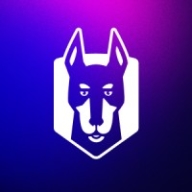

Prisma Cloud by Palo Alto Networks and Snyk are competitors in cloud security solutions. Prisma Cloud seems to have the upper hand due to its comprehensive features and multi-cloud security capabilities, while Snyk is more user-friendly, focusing on developer integration and vulnerability management.
Features: Prisma Cloud offers dynamic workload identity creation, an application dependency map across different environments, and automated forensics. Its multi-cloud security capabilities are bolstered by integrations such as AWS support and container, serverless functionality, and network mapping. Conversely, Snyk excels with easy integration into existing platforms and offers a significant focus on identifying vulnerabilities in open-source libraries with an integrated approach and comprehensive vulnerability database.
Room for Improvement: Prisma Cloud can improve by simplifying its user interface and enhancing API integrations, and providing clearer pricing structures. The cost can be prohibitive for smaller enterprises. Snyk should work on reducing notification overload, expand its language support for better reach, and enhance its static analysis features.
Ease of Deployment and Customer Service: Prisma Cloud supports extensive hybrid and public cloud deployments and offers strong technical support, yet there's room for improvement in response times. Snyk's primary deployment strength lies in its ease of integration into existing cloud environments, with highly responsive customer support, although it is more suited to public and on-premises installations.
Pricing and ROI: Prisma Cloud has a resource-based, complex pricing model that can be costly, especially for small enterprises, but it offers a potential ROI through enhanced security and operational efficiencies. Snyk is more attractively priced, offering flexibility in licensing. It's perceived as offering good value, though it can be expensive for smaller teams. Both solutions achieve noticeable ROI by improving security and operational efficiency through distinct strategies.
It eliminates the need for additional hardware, making it a financially and technically sound investment.
Reputation and data security are the two most important things to a financial institution.
We may have prevented a security breach with remediation of the findings.
I can see that Snyk saves the costs of hiring security developers for vulnerability scanning and security checks, as that responsibility is now managed by Snyk.
They can respond with technical documentation or pass on the case to the next level because it requires the development of a new feature or changing a feature due to a bug.
Anywhere we raise a tech case, they revert back within an hour.
Support is not just good; it's excellent.
Our long-standing association has ensured smooth communication, resulting in favorable support experiences and satisfactory issue resolution.
Their response time aligns with their SLA commitments.
We could understand the implementation of the product and other features without the need for human interaction.
Scalability is a strong aspect; we have never experienced issues with it.
Scalability-wise, I rate the solution a nine out of ten.
We haven't had any issues scaling the solution.
Snyk allows for scaling across large organizations, accommodating tens of thousands of applications and over 60,000 repositories.
Snyk is very scalable and can handle my organization's growth and changing needs.
I would rate it a ten out of ten for stability.
It provides excellent stability capabilities.
Most of the time, when the client requires data, it is not available.
Prisma Cloud is an excellent tool.
We could have deployed the runtime monitoring with Prisma Cloud by Palo Alto Networks, but within our organization at our company, it was very difficult to find who would be the owner for the alerts.
Even though documentation was available, it took a while for a new person to understand what integration meant, what will be achieved after the integration, or how the integration needed to be done on the Azure or AWS side.
It lacks the ability to select branches on its Web UI, forcing users to rely on CLI or CI/CD for that functionality.
The inclusion of AI to remove false positives would be beneficial.
As we are moving toward GenAI, we expect Snyk to leverage AI features to improve code scanning findings.
The cost was not on the higher side.
If you are using a single tool like Prisma Cloud, with a single license, you can monitor all environments, such as Google Cloud, Azure, AWS, and Oracle Cloud.
Prisma Cloud isn't cheap.
Snyk is recognized as the cheapest option we have evaluated.
After negotiations, we received a special package with a good price point.
Snyk is less expensive.
Prisma Cloud excels by offering a comprehensive solution within a single dashboard. This unified approach addresses all our requirements, making it the most advantageous aspect of this tool.
There is a wide range of integrations, and the compatibility with various cloud providers is very useful.
It provides a single pane of glass.
Our integration of Snyk into GitHub allows us to automatically scan codebases and identify issues, which has improved efficiency.
Snyk helps detect vulnerabilities before code moves to production, allowing for integration with DevOps and providing a shift-left advantage by identifying and fixing bugs before deployment.
Snyk has positively impacted my organization by improving the security posture across all software repositories, resulting in fewer critical vulnerabilities, more confidence in overall product security, and faster security compliance for project clients.
| Product | Market Share (%) |
|---|---|
| Prisma Cloud by Palo Alto Networks | 9.0% |
| Snyk | 4.8% |
| Other | 86.2% |

| Company Size | Count |
|---|---|
| Small Business | 36 |
| Midsize Enterprise | 22 |
| Large Enterprise | 56 |
| Company Size | Count |
|---|---|
| Small Business | 21 |
| Midsize Enterprise | 9 |
| Large Enterprise | 21 |
Prisma Cloud by Palo Alto Networks provides comprehensive cloud-native security solutions. It covers dynamic workload identity, automated forensics, and multi-cloud protection, ensuring robust security across diverse cloud platforms.
Prisma Cloud delivers advanced capabilities for managing cloud security across AWS, Azure, and GCP platforms. It offers dynamic workload identity creation, real-time monitoring, and seamless integration into CI/CD pipelines. With automation, centralized dashboards, and enhanced visibility, users effectively manage security misconfigurations and vulnerabilities. While optimizing cloud environments through runtime protection and compliance, Prisma Cloud faces challenges with its navigation, pricing, and limited automation capabilities. Users seek improvements in API security, role-based access controls, and documentation quality, emphasizing the need for enhanced customization and reporting features.
What are the important features of Prisma Cloud?
What benefits or ROI should users consider in reviews?
Industries like finance and telecom rely on Prisma Cloud for managing cloud security posture and container security. Teams utilize its capabilities across hybrid and multi-cloud settings to ensure compliance and robust threat protection. Features like misconfiguration detection and runtime monitoring are critical in promoting security objectives in these sectors.
Snyk excels in integrating security within the development lifecycle, providing teams with an AI Trust Platform that combines speed with security efficiency, ensuring robust AI application development.
Snyk empowers developers with AI-ready engines offering broad coverage, accuracy, and speed essential for modern development. With AI-powered visibility and security, Snyk allows proactive threat prevention and swift threat remediation. The platform supports shifts toward LLM engineering and AI code analysis, enhancing security and development productivity. Snyk collaborates with GenAI coding assistants for improved productivity and AI application threat management. Platform extensibility supports evolving standards with API access and native integrations, ensuring comprehensive and seamless security embedding in development tools.
What are Snyk's standout features?Industries leverage Snyk for security in CI/CD pipelines by automating checks for dependency vulnerabilities and managing open-source licenses. Its Docker and Kubernetes scanning capabilities enhance container security, supporting a proactive security approach. Integrations with platforms like GitHub and Azure DevOps optimize implementation across diverse software environments.
We monitor all Container Security reviews to prevent fraudulent reviews and keep review quality high. We do not post reviews by company employees or direct competitors. We validate each review for authenticity via cross-reference with LinkedIn, and personal follow-up with the reviewer when necessary.